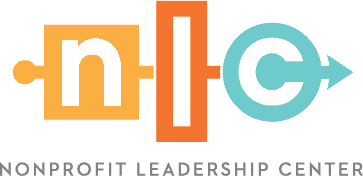Did you know we spend about 1 in every 3 hours that we’re awake at work? As nonprofit leaders, this means our colleagues and supervisor are constantly present in our everyday life. No wonder the saying “culture eats strategy for breakfast” is true. Despite the correlation between culture and performance, many organizations don’t make the time to be intentional about improving team dynamics and ensuring every employee feels valued.
A recent Google study revealed that employees who are passionate about their organization’s mission enjoy greater job satisfaction and demonstrate improved performance. Additionally, they found talented teams believe what they’re doing is important and supports positive change.
As you invest in developing skills like fundraising, marketing, financial management and customer experience, don’t forget to prioritize culture and talent recognition. Here are six ideas for improving team dynamics within your organization to create a happier, healthier and more productive nonprofit culture.
How to Start Improving Team Dynamics at Your Nonprofit Organization
1. Take the time to say thank you.
Whether it’s consistently starting the coffee in the breakroom every morning or producing a high-quality presentation that makes your team shine, let your coworkers and employees know how much you appreciate them. The same goes for volunteers. Most of the time, the little, everyday things make the biggest difference.
2. Spark curiosity and creativity.
Have you read an article recently that made you smile, was about a topic you know a colleague is passionate about or shares a tip your team could benefit from? Take a minute to send relevant content to a colleague that not only introduces new perspective to stimulate creativity, but also lets them know you’re thinking about them and are invested in their continued growth.
3. Listen, fully and completely.
As nonprofit leaders, we’re known for wearing a million hats and juggling mighty missions with limited resources. While time is a precious commodity for all of us, the people who make our mission possible are even more important. Be fully present with and for your team members. If someone comes to your desk to ask you a question, stop typing and reading emails and give them your undivided attention. This makes people feel valued. If you can’t give them that at the moment, let them know when you can. And for goodness sake, put down your phone.
4. Ask questions.
Getting to know more about your colleagues’ lives helps build camaraderie and is helpful for improving team dynamics. Ask coworkers about their family, hobbies and weekends. Take a genuine interest in those around you. When we care about each other, we work harder for one another.
5. Take a coffee break.
If you sense that a colleague is having a tough day, take 15 minutes to invite them to grab a cup of coffee. Not only is it a way to show you care, but it can also help everyone be more productive and positive when they return to the office.
6. Be generous with compliments.
A kind word can go a long way toward improving team dynamics. Share something you admire about a colleague or volunteer — perhaps an idea they offered in a recent meeting, the way they handled a sensitive situation, even something they wore or a joke they told. Consistently share why you believe the people you work with are such important parts of your team and mission. You might think they know how you feel, but a positive and meaningful reminder can do wonders for motivation.
READ NEXT: 5 WAYS TO RECOGNIZE VOLUNTEERS
*The statistic about how much time we spend at work is based on someone who works 40 hours per week with five weeks of vacation/holiday time and sleeps 8 hours per night.

